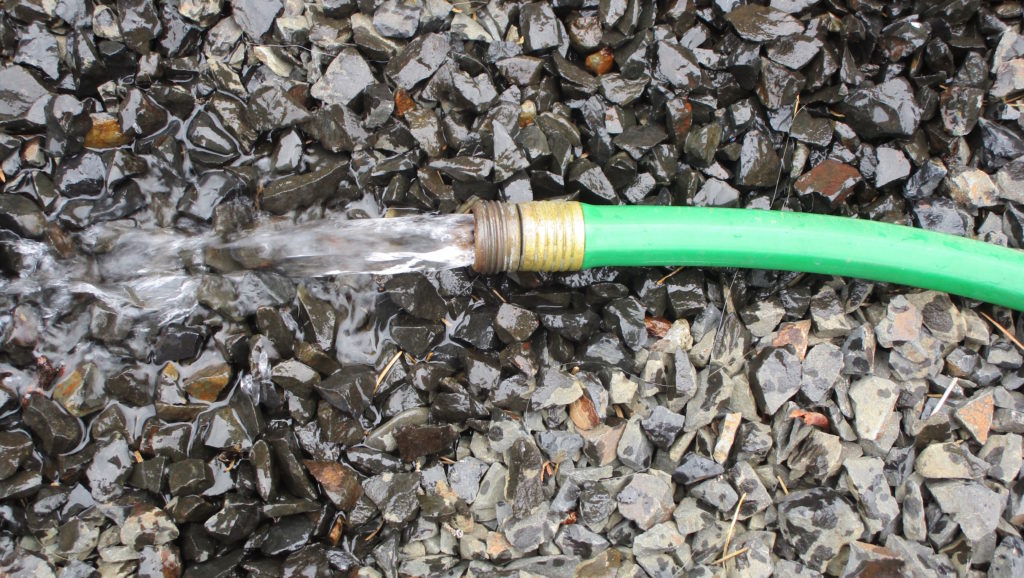
By QUINTON SMITH/YachatsNews.com
The city of Yachats is getting the first wave of information to possibly revise its water rates to raise enough money to keep up with maintenance but to also correct billing issues with eight large water users.
Tim Tice, projects manager for the Oregon Association of Water Utilities, on Wednesday walked the City Council through his initial study of Yachats’ water rates – and asked for direction on some issues.
After discussion, the council tentatively agreed to change the basic way the city charges for water. That change would not affect most of the city’s customers.
But before going any further, councilors asked Tice to first run additional numbers to show how the new method of calculating rates would affect the city’s largest water users. The effect upon five to eight of them could be sudden and drastic.

The issue is complicated and involves two major issues.
The first involves a council decision in 2015 to have residential users partially subsidize Yachats’ largest water users. That was a tradeoff to ease the impact on large users like motels and recognize they contribute the bulk of the city government’s revenue through lodging taxes. That decision also brought hundreds of second homes, whose part-time occupants use much less water, into the same rate system as year-round residents, thus providing more revenue to the city.
The second issue is a mistaken rate adjustment in February 2016 involving eight large water users that four years later continues to over-charge three and under-charge five. But the apparent mistake has never been confirmed by an outside, third party hired by the city.
Under current rates, that mistake is costing the city about $1,000 a month, according to figures from the Public Works and Streets Commission.
The City Council approved the $24,000 rate study in July in order to see how to best charge for water and to provide $200,000 in the budget for maintenance and repairs. But it also wanted outside information to help it determine how – or if – to correct for the 2016 billing mistake and to see how any rate changes would affect those large water consumers.
Those largest customers – they haven’t been named publicly, but include the Adobe, Overleaf and Fireside motels, Fisterra Garden apartments, and the Sea Aire Assisted Living facility – use 44 percent of the city’s water and cover about 25 percent of the overall cost.
How water billing works
The city currently charges its 858 residential customers a base rate of $48.24 a month for two units (1,496 gallons) of water. Additional charges begin once the customer uses more than two units.
Those residential customers have a meter 5/8ths inches in size.
The city has 30 commercial customers, 23 of which have a 5/8th-inch meter, and seven others with meters ranging from 1-4 inches.
Under the new water rate proposal, the city’s base rate would be based on the size of the meter and involve no changes for residential customers. But the base rate would jump to $530 to $675 a month for the businesses with the three- and four-inch meters and $140 for businesses with the one-inch meter.
The charges for consumption above two units a month would also rise substantially. To cover costs and provide enough money for yearly maintenance, the consultant recommended that the city’s consumption rate rise to $8.55 up to $12 from the current $5.33 for every unit of water used after the initial two units.
That would not affect most households, which generally use less than allowed under the base rate, Tice said.
The biggest hit would be on the big users, some of which use hundreds of thousands of gallons a month to serve guests, do laundry or fill swimming pools. Those would be allowed up to 28 units (21,000 gallons) a month but be charged at an accelerating rate for each additional unit of water up to $12 per unit after eight units.
“By doing nothing you’ll be 14 percent short,” Tice told the council, adding that the proposed rate structure provides “fair and equitable cost per unit across the board.”
Commission, councilors react
Bob Bennett, chair of the Public Works and Streets Commission, told the council that his group had seen Tice’s report at its Tuesday meeting and recommended going forward. The commission had been pressing the council for months to fix the 2016 billing mistakes but to also warn the large water customers they could see their bills increase substantially.
Councilor Leslie Vaaler said she was concerned about residents subsidizing business’ water use, but wondered if there was a way to gradually adjust rates for those users.
“In principle I’m OK with it (changing rate methods),” she said. “But I also don’t want to see motels suddenly go out of business.”

Vaaler and Mayor John Moore – with the help of former city financial consultant Tom Lauritzen – will pull numbers for the eight large water users, provide them to Tice who will run side-by-side comparison under the new rate structure.
“There’s enough money involved for the major users that we want to be sure of the impact,” Moore said.
To read more:
The Oregon Association of Water Utilities study is at the bottom of the Yachats City Council’s meeting packet, online here.


